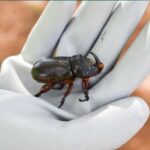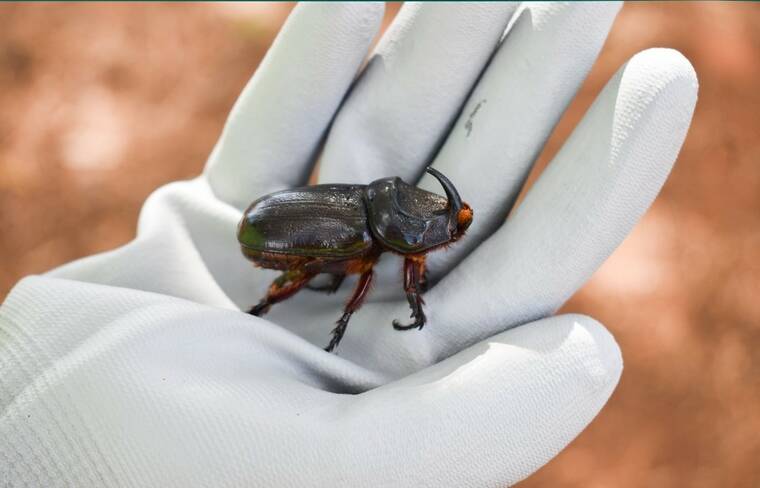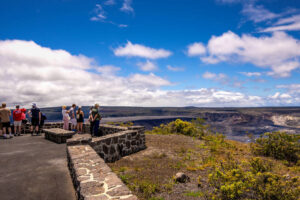State, county team up to fight invasive beetle



The state Department of Agriculture and Hawaii County Public Works Department have been working collaboratively since January to combat the coconut rhinoceros beetle after detections in the Kona area.
The DOA and county crews completed the latest round of treatments on palm trees last week at Ellison Onizuka Kona International Airport in the continuing effort to protect the island from CRB infestations, according to a press release from the DOA.
ADVERTISING
“The staff of the Department of Agriculture remains dedicated to stopping the further spread of the coconut rhinoceros beetle, with emphasis in areas that are not known to be infested,” Sharon Hurd, chairperson of the Hawaii Board of Agriculture, said in the release. “We truly appreciate the concern and assistance of Mayor Kimo Alameda and the county’s Public Works crew in providing the resources to prevent CRB from taking hold on Hawaii Island.
“We also appreciate all the various agencies and organizations that work tirelessly in the fight against invasive species.”
CRB can kill palms and other trees if they burrow and eat below the bark. They also are a threat to cultural staples like hala andtaro.
Alameda said “the introduction of the coconut rhinoceros beetle is a major concern, and we are committed to doing everything we can — alongside HDOA and our other partners — to stop its spread.”
In September 2024, DOA personnel found a single CRB in a trap during routine monitoring in Waikoloa. This was the first detection of CRB on the island since October 2023, when a Waikoloa resident found six grubs (larvae) in a decaying palm tree stump.
Increased surveillance continued throughout the island and more intensely on the Kona side.
In January, the county offered its resources and assistance to the DOA, including the use of a 75-foot boom truck to treat the crowns of palm trees. On Jan. 14, the team treated a total of 38 trees in the Waikoloa area via crown treatments, and 24 trees were treated via an injection system which provides systemic protection against CRB.
So far, there have been no further detections of CRB in Waikoloa.
The Big Island Invasive Species Committee on March 3 reported one adult CRB in a detection trap along the boundary of the Kona airport. A day later, two more adult CRBs were found in traps at the Natural Energy Laboratory of Hawaii.
After the detections, DOA, county crews and airport staff targeted treatments at the airport over a period of three days in March. The county provided the use of two boom trucks, and the team treated 128 trees on the airport grounds and injected 12 more trees that were inaccessible to the boom trucks. So far, there have been no further detections at the airport.
Last week, crews began work at NELHA and treated 58 trees via crown treatments with about 14 trees treated via injections due to their close proximity to water.
All palms that were treated were tagged and surrounded with yellow tape to indicate treatment. Coconuts from treated trees should not be consumed.
Questions regarding pesticide use may be addressed to HDOA’s Pesticides Branch at (808) 973-9402.
Surveillance for CRB continues around Hawaii Island by the DOA, BIISC, University of Hawaii, the county, and the state Department of Health.
Residents on all islands are asked to be vigilant when purchasing mulch, compost and soil products, and to inspect bags for evidence of entry holes. CRB grubs breed in decomposing plant and animal waste.
An adult beetle is about 2-inches long, all black, and has a single horn on its head.
Residents may go to the CRB Response website at www.crbhawaii.org/ to learn more about how to detect the signs of CRB damage and how to identify CRB life stages. Reports of possible CRB infestation may also be made to the state’s toll-free Pest Hotline at (808) 643-PEST (7378).







